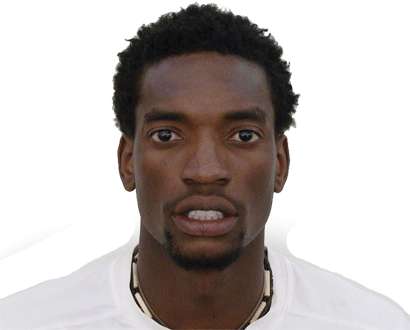Senamile Nkomo THE white people had indeed brought western-style law and order to Africa- but not justice — Martin Meredith, The Past is Another Country: Rhodesia-UDI to Zimbabwe.
In the first week of July, 2021, former President of South Africa, Jacob Zuma, was jailed for refusing to attend continuing sessions of a state Commission of Inquiry. Days of violent protest followed, leaving over 300 people dead, and property destroyed. The country’s security ministries were blamed for failing to ensure — or rather enforce — law and order.
The initial official narrative was that the riots were a result of ‘ethnic mobilisation’, and later, that the violent protests were in fact an insurrection or attempted coup. Military units were deployed to quell the violence.
Now rewind 25 years back, to the first post — apartheid Commission of Inquiry in South Africa.
Former president Nelson Mandela had appointed the Truth and Reconciliation Commission (TRC) to report on gross violations of human rights perpetrated during a 35-year period from 1960 to 1994.
The TRC served as an inspiration to many similar commissions in different parts of the world where a period of violent conflict was hopefully to be closed with the help of a transitional mechanism, such as South Africa had employed.
There had been apprehension in many quarters that the transition to black rule in South Africa would collapse into an orgy of violent conflict. Those fears proved unfounded, and the TRC was credited — rightly or wrongly, with having contributed to the apparent ‘miracle’.
The TRC chair — the Late Archbishop Emeritus Desmond Tutu and his team of commissioners, definitely felt that they were walking a tightrope — the failure of their assignment could be the fuse to ignite the feared conflagration.
- Chamisa under fire over US$120K donation
- Mavhunga puts DeMbare into Chibuku quarterfinals
- Pension funds bet on Cabora Bassa oilfields
- Councils defy govt fire tender directive
Keep Reading
To be sure, there were many opportunities for elements of both the former apartheid regime and the new ANC government to feel sufficiently aggravated by the Commission’s probing (for an example, the nine day grilling of struggle icon Winnie Madikizela-Mandela) to abandon the process and spark a collapse of the hoped for ‘Rainbow Nation’ and its government.
In the foreword to the First Volume of the TRC report, Tutu emphasised this point: “We have the luxury of being able to complain because we are now reaping the benefits of a stable and democratic dispensation. Had the miracle of the negotiated settlement [FN1] not occurred, we would have been overwhelmed by the bloodbath”.
Indeed, the TRC found comfort in the words of American human rights campaigner Judge Marvin Frankel (who is quoted in the report) on the difficulties of meting out justice to perpetrators of human rights abuses to whom the security agencies may still be loyal:
“If the police and the army have been the agencies of terror, the soldiers and the cops aren’t going to turn overnight into paragons of respect for human rights. Their numbers and their expert management of deadly weapons remain significant facts of life . . . the soldiers and police may be biding their time, waiting and conspiring to return to power”.
No doubt this disquieting analysis influenced how former president P Pieter Willem (P.W) Botha was treated when he refused to appear before the TRC. He was tried at the High Court and given a fine of R10 000 (just less than US$1 000) and a suspended sentence that was later overturned on a technicality.
The TRC later found Botha guilty of gross human rights violations.
Even though he had neither appeared before the commission nor expressed regret for the crimes he had presided over — (both conditions for the granting of amnesty to perpetrators) — Botha was never tried for his crimes.
This notwithstanding the fact that outside the TRC, there was no legal basis for that omission. By contrast, in 2021, Zuma was sentenced to 15 months imprisonment without the option of a fine for refusing to submit himself to the Commission of Inquiry into State Capture.
What might be the reason for this apparent lack of equality before the law? Was it because the arrest of Zuma, while predictably leading to temporary riots, did not pose the same danger to the state as would have been the case if Botha had been jailed?
Or perhaps because economic charges are regarded more seriously than gross violations of human rights in post-apartheid South Africa?
Or was it because Botha’s conduct was viewed in the context of ‘transitional justice’ while in 2021 South Africa’s democracy was apparently well established and therefore the ‘rule of law’ is sacrosanct?
But is South Africa’s democracy indeed well established? Elements of all the above appear to provide at least a partial answer.
The ANC’s 1955 Freedom Charter had itself proclaimed that in a free South Africa “imprisonment shall be only for serious crimes against the people and shall be aimed at re-education, not vengeance”.
In the case of those found to be guilty of gross violations of human rights — as Botha was — the TRC applied the concept of restorative justice, not retributive justice.
In the case of Zuma, by contrast, the impression is that ‘the system’ appeared rather eager to ensure incarceration for an alleged commercial (or governance) infraction rather than a gross human rights charge.
The opposite was the case with Botha. The late Archbishop Emeritus explained in Paragraph 48 of the Foreword to the First Volume of the TRC Report, that: “Equally, in the case of Mr Botha, all we could do was to lay a criminal charge — which we did, however reluctantly.
Even while the court was in progress, we continued to seek an acceptable solution — both in the interests of reconciliation and because we did not want to see him humiliated. We even offered to have an in camera hearing . . .”
The appearance of eagerness to prosecute in the case of Zuma, the seeming determination to imprison — without the option of a fine and the absence of any hesitation to humiliate seem to stand in contrast to the treatment of the late Botha.
This article will seek to examine the socio-political environment at the time the two ex-presidents defied Commissions of inquiry through the lenses of critical human rights analysis of TRCs, critical neoliberal analysis of the post TRC South Africa and reference to the implications of South Africa’s constitutional democracy in order to understand how the two symbols were served: Botha, a symbol of apartheid, and Zuma — of the struggle against apartheid.
It will be useful to abstract from the specific personal details of the two men and treat them merely as symbols of their respective political campaigns.
Their guilt or otherwise on the charges brought against them will therefore not be relevant.
This will bring into focus the issues that lie at the heart of the crucible that tested both Botha and Zuma and determined how they were treated and the implications of these dynamics for those people that Zuma represented in the days of the struggle.
To return to the matter of symbolism: At the time of Botha’s death in 2006, the iconic first post-apartheid president Nelson Mandela described Botha as a ‘symbol of apartheid . . . to many’. So did the Economist of November 4, 2006 that headlined its article on the passing of Botha, ‘The Great Crocodile slips away’, and followed up with the opinion that ‘few mourn the death of an unrepentant symbol of apartheid’.
Why ‘the great crocodile’? One commentator opined that “the apartheid years under his leadership were by far the most brutal” with thousands detained without trial and others tortured and killed.
One of those brutally killed was Griffith Mxenge (1935-1981) — a human rights lawyer who represented victims of the apartheid regime in court.
Mxenge was one of the 49 inmates in the history of Robben Island having been detained from 1966 to 1967.
In 1981, Mxenge was abducted by members of a special police hit squad just as he was about to arrive at his home after work and taken to a site near, or in, a nearby football field.
There, he was assaulted with three okapi knives and a bush knife and suffered 45 lacerations in the gruesome process. His murderers confessed to the murder before the TRC and received their pardons (a few years later his wife Victoria was murdered in her home by agents of the regime).
According to their testimony, they had been instructed not to kill him with a fire-arm, presumably to instil fear in the community as well as to inflict maximum pain.
Botha was a symbol of the apartheid state. A symbol of its might, its values and because it was violent — its violence.
According to Paul Tillich, a symbol “is a sign that points to, while participating in something beyond itself”. Tillich illustrates the power of symbols by inviting his audience to consider the difference between two symbols — a stop sign and the American flag.
He points out that the American flag is more than a sign; it is a symbol that points to, while participating in something beyond itself, the American nation.
“That is why what is done to the flag, whether it is placed on the moon or burnt can cause intense emotional reactions.”
To his adherents, the guilt or otherwise of Botha the individual no longer matters as much as his power as the representative of a course, albeit a misguided or even criminal cause. It was, therefore, clear to the TRC and the government of Nelson Mandela that how Botha was treated mattered.
Hence, the TRC’s reluctance to humiliate him, the offer to grant him a hearing in camera and eventually the R10 000 fine and a suspended sentence.
Jacob Gedlikhaya Zuma is one of less than 20 living South Africans to have been incarcerated — unjustly — on Robben Island, together with Nelson Mandela, for their active engagement in the anti-apartheid struggle.
Along with the murdered Mxenge, who served on Robben Island from 1966 to 1967, Zuma served 10 years beginning December, 1963.
He was reportedly kept in a communal cell that held 30 to 60 men at a time. Without the benefit of a formal education, he became one of the two Robben Island inmates to have risen to the position of substantive President of South Africa.
He is also known for holding strong Zulu traditions. Most probably because of his experiences in the struggle — in prison and in exile — he is said to be fluent in French, Portuguese, Russian, Swahili and Xhosa, in addition to his native Zulu language, and of course, English.
Zuma without doubt is a symbolic figure to the millions of Zulus in South Africa, as well as a struggle stalwart.
As such, it can be argued that his arrest would have quite predictably triggered political unrest in parts of the country, as indeed the arrest of Botha would have done.
But the unrest that followed Zuma’s arrest would have been expected for another reason: Josh Bowsher, two years before Zuma’s arrest — noted that South Africa’s “transitional closure” was already “unraveling”, while Lisa Laplante — in an article on Transitional Justice, — notes the increasing number of violent protests in countries where TCs have studied similar episodes of unrest in the past.
Laplante emphasises the fact that TCs should in future expand their mandate beyond an interrogation of civil and political rights, and instead examine the complete portfolio of civil, political, social and economic rights — because “if the underlying socioeconomic structures that lead to violence are not addressed, sustainable peace will remain beyond our reach”’.
A case in point highlighted by Laplante is the Peruvian Truth and reconciliation Commission of 2003, following which “popular protests began steadily to increase”.
Nkomo is the author of Joshua Nkomo, Father Zimbabwe.











